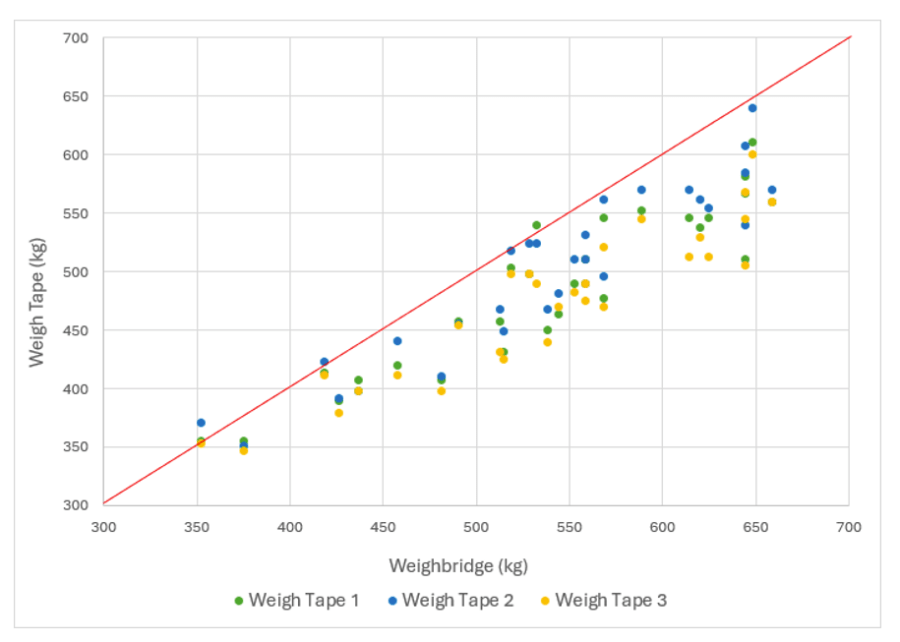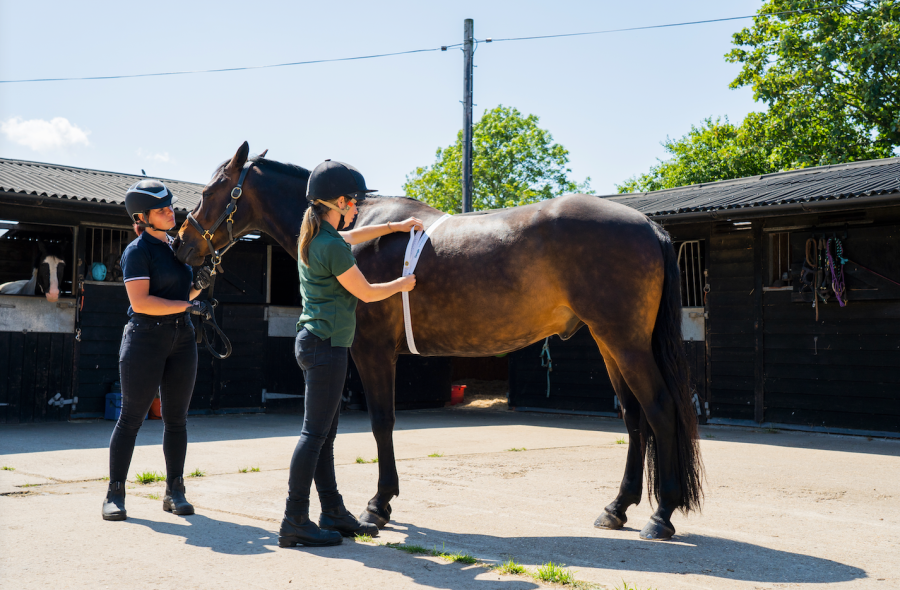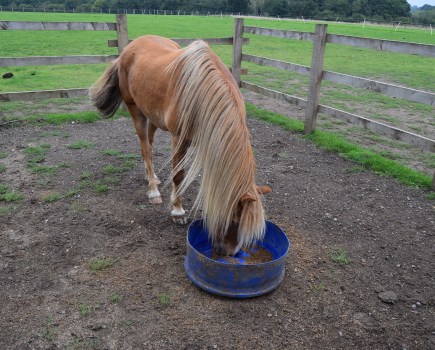Many people regularly use a weigh tape to assess and monitor their horse’s weight while feeding a healthy balanced diet. However, a preliminary study into the accuracy of weigh tapes has found that they can vary by 20% or more compared to a weigh bridge. The research carried out by Dengie compared three different weigh tapes and found that they generally underestimate a horse’s bodyweight, especially in bigger horses.
When 650 people were surveyed in 2021, 72% of respondents said they used a weigh tape on their horse. Of these, 25% used a weigh tape weekly, while 26% of respondents said they used a weigh tape monthly.
“Regular monitoring is important as part of a weight management plan to help horse owners track changes in their horse’s bodyweight. If tapes are generally underestimating a horse’s weight it may well be contributing to the difficulties horse owners have in recognising obesity, which is why Dengie wanted to explore this area further,” said a statement.
Underestimating a horse’s weight
The trio of weigh tapes used in the research each had its own varying scale which was compared to weigh bridge readings. There were 29 horses used in the study, ranging from 13hh to 17.2hh with body condition scores of 2.5 to 4.5 on a five-point scale.
“[The weight of] larger horses tended to be underestimated to a greater extent than ponies, with the biggest difference recorded for a 17.2hh mare who was 138kg less on one weigh tape reading compared to the weigh bridge — a 21% difference,” said a statement from Dengie. “The closest weigh tape reading was still 104kg less than the mare’s actual bodyweight.”
Overestimating bodyweight on a weigh tape was much less common, with only five readings from the entire study suggesting a horse was heavier than they actually were. Some of these overestimates were for the same horse when weighed with different tapes.
“The greatest overestimate of the study was only 19kg, a 5.4% difference. This is in line with results from Grimwood et al. (2023) which found that the weigh tape used in their study typically underestimated bodyweight, more so for bigger horses. This is particularly interesting as the Dengie study used three different types of weigh tape rather than just one used in the 2023 study.”
The results
 The graph (right) shows how all three weigh tapes compared to the weigh bridge value for each horse. Each coloured dot represents a weigh tape reading and the different colours represent the three tapes used: green for weigh tape 1, blue for weigh tape 2 and yellow for weigh tape 3. The red diagonal line is the identity line, which shows the point at which an identical reading would be seen between the tape and the bridge.
The graph (right) shows how all three weigh tapes compared to the weigh bridge value for each horse. Each coloured dot represents a weigh tape reading and the different colours represent the three tapes used: green for weigh tape 1, blue for weigh tape 2 and yellow for weigh tape 3. The red diagonal line is the identity line, which shows the point at which an identical reading would be seen between the tape and the bridge.
“Although the study was done on a relatively small scale, it provides further support for the importance of horse owners using the same tape every time when monitoring changes in bodyweight,” said Dengie.
The weigh tapes were found to vary by up to 10% in their readings for the same horse at the same time, which would equate to a difference of 50kg for a 500kg horse.
While this research suggests a weigh tape may not provide an accurate weight, it can still play a key role in managing the weight of horses. By using a weigh tape regularly, owners are able to identify any trends of weight gain or loss over a period of time.
Dengie has further research planned, particularly looking at the accuracy of weigh tapes for horses and ponies who are overweight.
Using a weigh bridge
Most of the leading feed companies provide a weigh bridge service. Some will visit a yard with the weigh bridge providing there is a minimum number of horses on site.
“Interestingly, 56% of horses and ponies who attended a Dengie weighbridge clinic in 2023 were overweight, which reflects levels of obesity regularly cited in the literature,” added Dengie. “While weight is just a number and body fat/condition score is arguably more useful in the context of obesity issues, a correct weight is important for ensuring sufficient forage intake is maintained and determining feeding rates.”









